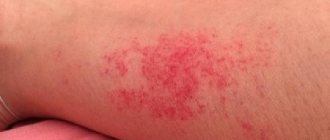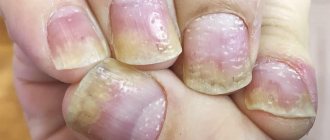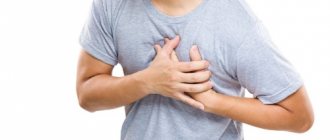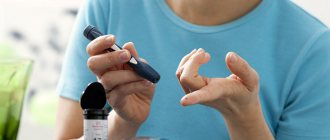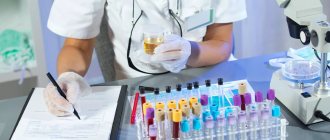09/19/2017 Olga Migunova 2 comments
Red spots on the skin of the face are a problem faced by both adults and children, regardless of gender. The affected skin peels and itches, which brings a lot of suffering. Faced with such a problem, we try to disguise these spots with foundation or other cosmetics, and it does not always occur to us to seek help from a specialist.
In most cases, the battle with red spots on the face ends in our loss. This is explained by the fact that red flaky spots on the face should not be hidden under a layer of cosmetics; the cause of their appearance must be found out and eliminated. Since such skin defects spoil the appearance and often indicate a malfunction of the internal organs.
Therefore, we propose to look at why red spots appear on the face in women, men and children, how to treat them and how to prevent their appearance. You can also look at photos of red spots to know the “enemy in person.”
Why do red spots appear?
There are many factors that provoke the formation of redness. They may be as follows:
- the body’s autonomic reaction to stress, a jump in blood pressure, physical stress;
- inflammatory reactions caused by insect bites;
- hemangiomas are benign tumors of various sizes;
- allergy - a negative reaction in response to an irritant;
- viral infections - chicken pox, rubella, measles;
- bacterial diseases - scarlet fever, streptoderma, erysipelas;
- autoimmune diseases - psoriasis, lupus erythematosus, scleroderma;
- fungal skin infections, for example, candidiasis, ringworm;
- avitaminosis;
- hormonal imbalance;
- pathologies of internal organs;
- helminthic infestations.
These are just some of the reasons. The list can be expanded and deepened for a long time. Redness on the face occurs in response to mechanical stress. For example, in men, spots appear after shaving, in women - as a result of chemical hair removal on the face or their removal with tweezers. Many people suffer from cold allergies or get sunburns because their skin is very sensitive to low temperatures and ultraviolet radiation. Screaming, crying, laughing, jogging - these emotions and actions cause a rush of blood to the face, after which red spots appear on it.
Convex dark spots on the face in older people
Flat large formations, senile lentigo, indicate a malfunction of the liver. They usually appear in very old age.
Senile freckles
A relatively harmless manifestation of age-related pigmentation. Small brown dots on the back of the hands and forearms indicate hormonal changes in the body.
Keratomas
Scaly yellow-brown spots anywhere are dangerous for degeneration into a malignant tumor.
Xanthelasma
Soft oval growths, which are more often found in women on the eyelids and cheeks.
Type of red spots in various diseases
Obvious causes - mechanical stress, physical activity, weather conditions - usually do not cause alarm. But what to do if a red spot of unknown origin appears on your face? And even more so if such rashes appeared in the plural? Only a specialist can establish the exact etiology of a skin disease. Perhaps this is one of the following pathologies:
- Hemangioma . The tumor consists of cells of vascular tissue. It can be located on the surface of the skin or in the subcutaneous fat, and can also be mixed. Favorite locations for hemangioma are on the cheeks or forehead (see photo).
Hemangioma on the cheeks
- Ringworm is an infection that is transmitted from one person to another, animals, household items and clothing. Can be located on any part of the body, including the face. The spot has an oval shape with smooth edges. The surface of the lichen is covered with small crusts, slightly flaky and itchy. The rim of the spot is more saturated in color than the middle.
Ringworm on the face
- Candidiasis (the more common name for the disease is thrush). Typically, in an adult, this fungal disease is associated with gynecological problems. Infection of children, in most cases, occurs in utero. In newborns, the fungus often affects the mucous membranes, and doctors diagnose oral thrush. If candidiasis affects the skin, then red lesions with papules, vesicles and erosion appear on its surface (see photo).
Candidiasis on the face of a child
- Streptoderma (streptococcal pyoderma). Round spots with a diameter of 3-4 cm form on the skin. The patient experiences severe itching and scratches the rash. Thus, the infection spreads throughout the body, forming extensive lesions.
Streptoderma
- Erysipelas is an infectious skin lesion caused by streptococci or staphylococci. This disease is more often diagnosed in women, as well as in older people. The pathogen enters the body through wounds and scratches, after which red spots with a raised ridge form on the body.
Erysipelas of the skin
- Lupus erythematosus is a chronic disease, one of the characteristic symptoms of which is slightly raised spots of pink or pale red color. The surface of the affected areas peels off. Subsequently, the spots disappear, being replaced by scar tissue. Redness associated with lupus has a characteristic pattern - it is called the “lupus butterfly”.
Spots on the face due to lupus erythematosus
- Contact dermatitis is a local reaction of the body in response to an irritating substance or allergen. The skin turns red, itches, bubbles, blisters may appear, and after separation of the serous exudate, crusts may appear.
Contact dermatitis on the face
- Urticaria is an allergic disease. A rash in the form of flat and raised blisters quickly spreads throughout the body. The elements can merge with each other, forming large affected areas. Hives can be triggered by exposure to sunlight, stress, or contact with allergens contained in food, clothing, air, and medications. Within 1-2 days, the symptoms of urticaria disappear and the rash goes away.
Hives
- Actinic keratosis is a precursor to squamous cell skin cancer. In 60-70% of cases of the disease, the provoking factor is excessive insolation of the body. One of the characteristic symptoms of actinic keratosis is the appearance of scaly red spots, about 1 cm in diameter, with clear edges.
Actinic keratosis in the initial stage
- Rosacea (rosacea) is a chronic pathology characterized by persistent redness (erythema) of the skin. Depending on the form of the disease, the development of edema, the appearance of papules, nodes and plaques is possible.
Rosacea
- Demodectic mange is a disease in which a microscopic mite parasitizes the face subcutaneously. The external manifestations of demodicosis can easily be confused with acne and rosacea.
Demodicosis on the face
Descriptions of spots and photos give only a general idea and are not suitable for self-diagnosis.
Do not self-medicate: you need to consult a dermatologist!
External reasons
A fresh complexion has been a sign of good health since ancient times. This is still considered beautiful. Women even began to use blush, and in ancient times beet juice performed this role.
If no products are used, and the face is red and burning, then this may be due to various external reasons. Typically this phenomenon is associated with:
- strong wind;
- exposure to the sun;
- high temperature outside;
- frost.
If the blood vessels are located too close to the skin, then even small changes in environmental temperature or wind can fill the capillaries with blood. This leads to the fact that the face turns red and burns. You also need to take into account that after being outside, such symptoms also appear, since the temperature in the environment and in the room is different.
Weather factors can cause not only redness of the skin, but also peeling. To prevent this, cosmetologists and doctors advise using sunscreen in the summer to prevent sunburn. You also need special creams in winter that will protect against frostbite.
If the face turns red, the reasons for this phenomenon may be the use of inappropriate or low-quality cosmetics. It is also important not only quality, but also quantity. When you thoughtlessly use various creams and decorative products, there is a risk of allergies. A reddened and burning face is a common symptom when using expired cosmetics.
Drug treatment
The prescription of drugs internally and externally depends on the diagnosis. If red spots on the face are due to a lack of vitamins, the doctor may recommend multivitamin complexes in capsules and tablets or injectable forms. Complexes are usually prescribed in which vitamins A and E predominate (Supradin, Aevit, Alphabet).
For various types of mycoses, antifungal agents are used: Lamisil, Batrafen, Exoderil and others.
Streptoderma in children is treated with antimicrobial drugs - tetracycline or streptocidal ointment, and also, to treat the affected areas, antiseptics are used - brilliant green, fucarcin. An adult may be prescribed hormonal medications (Loriderm, Triderm). To relieve itching, antihistamines are used orally (Suprastin, Claritin).
Treatment of systemic diseases, such as lupus erythematosus, is carried out with glucocorticoid hormones (Prednisolone), and if they are ineffective, with cytostatic immunosuppressants (Azathioprine, Cyclophosphamide, Methotrexate).
If redness often occurs due to poor resistance to stress and nervous tension, sedatives will help - Novo-Passit, glycine, valerian, bromine-containing drugs.
The list of possible diseases and medications can be endless. Only by visiting a doctor can you get answers to all your questions about medication treatment.
Symptoms, signs and consequences
If you are convinced that red, scaly spots have appeared on the face as a result of an allergic reaction, exposure to cold or sunlight, or the wrong set of cosmetics, then you can identify the corresponding symptoms and signs:
- A red or pink spot on the face in the cheeks, nasal cavity or chin.
- Irritation or peeling , itching, unpleasant painful sensation.
- Redness on the face intensifies as exposure to any of the above factors occurs.
- The spots cause an unpleasant feeling of tightness, the skin has become rough to the touch.
- Often , the affected area of the face is covered with small scales, which can peel off in their place, leaving white spots that are dry to the touch, and when touched may be accompanied by a painful burning sensation.
If you notice any symptom, you need to consult a specialist. After all, such an ailment can interfere not only aesthetically, but also be a sign of one of the serious diseases, which, quite possibly, you could not even suspect before.
If you made the right decision and consult a specialist dermatologist, then evaluate additional symptoms, such as:
- Painful sensations in the joints.
- Increased body temperature.
- Acute pain in the heart area.
- Decreased heart rate.
- Inflammation of the lymph nodes.
- Frequent feeling of nausea.
This is the first signal that you need to immediately undergo a full course of medical examination. This will help you detect or exclude the presence of a serious disease, which, if not treated on time, can lead to the most terrible consequences.
Cosmetic procedures
Cosmetology solves minor problems, such as redness (post-acne) after self-squeezing pimples or chronic inflammation in the layers of the epidermis due to acne. The cosmetology clinic uses methods such as:
- Peeling . This exfoliating treatment deeply cleanses the skin. It removes dead skin cells from the surface, thus renewing the dermis. The skin brightens and takes on a healthy appearance.
- Mesotherapy is another way to renew the dermis. Using a thin needle, drugs with biologically active substances are injected subcutaneously, aimed at improving blood circulation and collagen production. This can be hyaluronic acid, antioxidants, vitamins, plant extracts. Acting from the inside, the drugs have an enhanced effect on cells. The skin is smoothed out, pigmented brown and red spots disappear.
- Laser resurfacing (otherwise called laser peeling). Smoothing of the skin and removal of dead cells occurs due to the evaporation of soft tissues. The procedure increases blood flow and activates collagen production. With the help of laser resurfacing, you can eliminate not only spots, but also scars.
In addition to radical methods, specialists use professional masks and lotions to whiten and even out skin color.
Tinctures
If redness appears after squeezing out pimples, pharmacy tinctures are used. Calendula tincture is especially effective. It must be used strictly locally, on affected areas, as it is active and can have a negative effect on healthy skin.
An alcohol tincture of aloe juice, which is sold in a pharmacy, is also suitable. The level of alcohol there is minimal, it is only a preservative. This product is suitable for treating all facial skin, even with extensive inflammation.
Folk recipes
At home, self-prepared masks, applications and lotions will come to the rescue. If a red spot on the face that is not caused by the above diseases does not go away for a long time, you can use the following recipes:
- Mix 50 g of cucumber puree with 20 g of white clay, thickly diluted with chamomile decoction. Apply the composition to the face, rinse with warm water after 20 minutes.
- Combine 1 tbsp. l. lemon juice with egg white, beat until foam forms and apply to the affected area. After 15 minutes, the mask can be removed.
- A pharmaceutical sachet of bodyagi is diluted with hydrogen peroxide (3%) to a liquid paste. The mixture is applied to the face and kept for 10 minutes, after which the mask is washed off first with warm and then with cold water. The course of treatment is 6 days. The procedure is done every other day or daily.
- Prepare a mixture that contains tea tree oil, lavender oil and lemon juice in equal parts. Morning and evening, wipe redness with this mixture without touching healthy skin. The course lasts 3-5 days.
- Keep aloe leaves in the refrigerator for 7 days. Then the plant should be cleaned, crushed and squeezed out the juice. It can be used as a compress, applied to red spots for 15 minutes, or rubbed onto the skin 2 times a day.
- Calendula juice helps a lot. It is mixed in equal parts with honey and, using a cotton swab, applied to the damaged skin for 5 minutes. Such compresses are done 5-7 times a week.
- Prepare the tincture: 2 tbsp. l. dry crushed St. John's wort is poured with a glass of alcohol and left for 10 days in a dark place. This tincture can be used to wipe red spots on the face every day.
Important! For vascular pathologies, homemade masks can be used only after consultation with your doctor.
In terms of effectiveness, homemade masks are weaker than professional cosmetics. In advanced cases, if your entire face is covered with red spots, it is better to schedule a visit to a cosmetologist.
Physiological reasons
If the face suddenly turns red and begins to burn, this may be due to a health condition. In addition to allergies, causes include:
- diseases;
- menopause;
- pregnancy;
- drinking large amounts of alcohol;
- smoking.
There are serious illnesses that cause the face to become red and itchy. This is associated with:
- heart problems and blood supply to the skin;
- arterial hypertension;
- infectious diseases;
- lack or excess of vitamins;
- non-infectious skin diseases;
- metabolic disorders;
- intoxication;
- changes in hormonal levels.
If the face turns red, the reason may be a hereditary predisposition if the skin is thin. In this case, you need to monitor your health, lifestyle, nutrition, and selection of cosmetics. For washing, it is better to choose warm water and avoid being in the sun for a long time. You should also minimize alcohol consumption and eliminate cigarettes.
When it comes to cosmetic products, it is advisable to choose those that do not contain ethanol. The daily menu should consist of fruits and vegetables. If the face is red and burning, then this can be eliminated with herbal decoctions, for example, based on linden or chamomile. The main thing is that there is no allergy to these components.
When the pressure is 200/100, there is often a rush of blood, which usually occurs in men. The vessels become overcrowded and dilated. Small capillaries located near the skin lead to the problem being studied. If the face turns red or the blood pressure rises, the person must be given first aid so as not to worsen the condition.
If you have hypertension, then you need to change your blood pressure. If the numbers are elevated, you need to call an ambulance. For example, with a blood pressure of 200/100, a doctor’s help is required.
Prevention
Taking care of your skin includes a few simple rules. You need to lead a healthy lifestyle; ensure that the diet is well balanced; drink your daily amount of water (up to 2 liters). To avoid infection and the appearance of red spots, it is not recommended to squeeze pimples and blackheads. It is necessary to protect the skin from sun rays using SPF, and in the cold season use cryoprotector creams.
In the presence of serious illnesses, measures should be taken to reduce the intensity of the rashes and prevent relapses.
After meal
This often occurs with allergies to food products, berries, vegetables, and fruits. Another reason is the presence of irritants in foods that speed up blood flow. Vessels close to the skin dilate, leading to severe redness of the face and neck.
What to do if redness occurs after eating? Nutrition should be adjusted. You should not include seasonings, fast food, spices, alcohol, marinades, soda, or smoked foods in your diet.
Care
To normalize complexion, the following procedures are performed:
- Protection from irritating factors: wind, heat, cold.
- Avoiding prolonged exposure to the sun or solarium.
- Using moisturizing creams.
- Refusal of cosmetics.
Weak, not yet fully restored facial skin needs to be protected from mechanical damage. Therefore, you should not injure her with various cosmetic procedures.
Diagnostic methods
Diagnosis of rashes is the only way to find out an accurate diagnosis. The doctor selects suitable examinations individually after an external examination and medical history.
May require:
- allergic skin tests;
- blood chemistry;
- scraping from the affected area;
- Ultrasound;
- tests for STDs;
- general blood and urine analysis.
If necessary, consultation with highly specialized specialists may be required.

